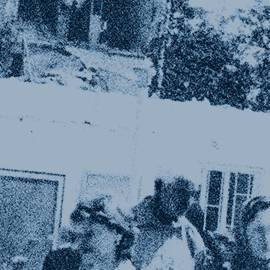Inhuman and degrading treatment
In other publications on the website, we have already touched upon the practice and statistics of torture committed against the civilian population, combatants and irregular fighters during the conflict in the North Caucasus. The legal definition of inhuman and degrading treatment, enshrined in international treaties, has a wide scope and differs from the legal definition of torture. First of all, the key difference lies in the degree of the victim’s suffering. Unlike torture, these other forms of ill-treatment do not necessarily require the existence of a specific purpose.[1] As per the definition of the International Committee of the Red Cross, which is based on the principles of international humanitarian law, inhuman and degrading treatment includes:
Inhuman, cruel, abusive and degrading treatment, insult to human dignity, and physical or moral influence.[2]
Despite these differences and its wider scope, inhuman and degrading treatment, as well as torture, is strictly prohibited under international humanitarian and human rights law.[3]
According to the Natalia Estemirova Documentation Center (hereinafter the Database), serious human rights violations such as killings, disappearances, kidnappings and other violations were often mentioned as accompanying crimes to the crime of inflicting inhuman and degrading treatment, as committed in the context of the conflict in North Caucasus. However, the counting of victims who did not have these accompanying offenses is still in progress. Accordingly, this publication is divided into two parts and provides a complete overview of the events that took place in the North Caucasus. The first part concerns victims that are registered in the Catalogue of the Database; this section also describes the accompanying violations mentioned above. The second part focusses on the statistics and accounts regarding those who have not yet been fully verified in the Database. It is important to consider both classifications in order to understand the scale and specificities of the violations against all victims registered in the Database.
The practice of inhuman and degrading treatment among the verified number of victims
The Database counts 509 victims who experienced inhuman and degrading treatment in the context of the conflict in the North Caucasus.[4] 433 of these cases occurred within the Chechen Republic. As chart 1 shows, the majority of the victims (377 victims) in Chechnya were men. Approximately one eighth (56 victims) of the total number of victims in the Chechen Republic were female. It is only in the number of total victims that the treatment between men and women differs. As the accounts in the Database reveal, the gender of the victims was not a decisive factor in determining the degree of cruel treatment experienced.
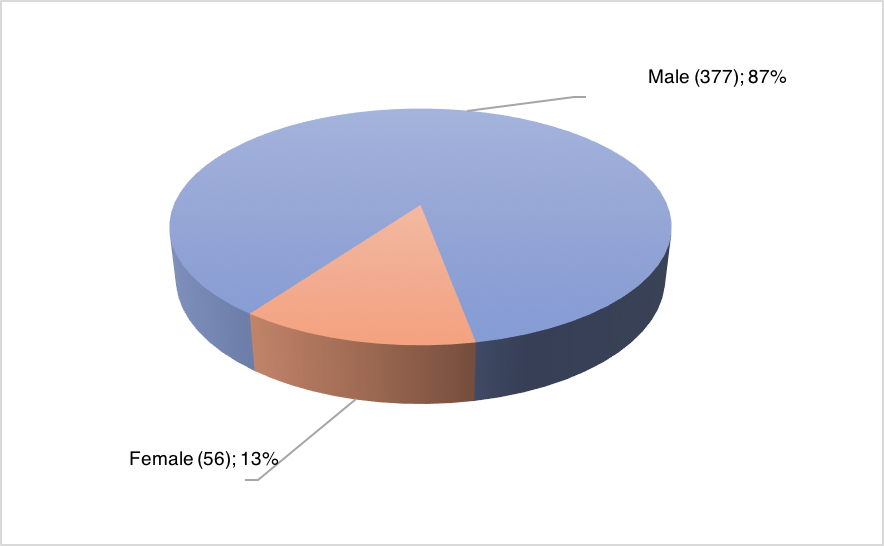
For example, during the sweeping operation in the village of Tsotsi-Yurt in July 2002, a local family was severely attacked by the military. The military broke into the family’s house and threatened to shoot a person present who was suffering from a mental illness. Military personnel subsequently began brutally beating the family members. Not even the new-born, a girl less than a year old, was spared; she was beaten in front of her mother.
Throwing the warm romper on the child’s head and holding her up by the neck, they were beating her with the twisted towel and shouting “Chechen bastard!“[5]
Following this ordeal, the girl’s mother was dragged into the attic and was held down by an attacker, unable to move. The victim’s husband was kidnapped. The next day, the victim was attacked in the street by the same military personnel who attempted to force her into sexual intercourse. As she was trying to resist, the military injected a green liquid into her anus causing her to lose consciousness from the severe pain this caused. The victim’s husband eventually returned home a few days after the kidnapping and torture he had endured, however the peace and security of the family had been destroyed.[6]
As in the case above, in many instances, the victims registered in the Catalogue were also subjected to other violations during the conflict. Inhuman treatment was often accompanied by beatings, torture and killings. Most of the victims, that is 295 of the total 433 in Chechnya, were illegally detained or kidnapped. At least 137 victims suffered a violation of their right to life, meaning that they were either killed or disappeared. In 115 cases, the right to respect for private and family life was violated. In many cases, the military unlawfully broke into the victim’s house and conducted unauthorized searches. Other commonly related violations in the Database include the violation of the right to health (106 victims), torture and sexual violence (96 victims), violation of the right to property (78 victims), and violation of the right to personal integrity (38 victims).
According to the statistics from the Database, 68% of the victims of inhuman and degrading treatment in Chechnya (297 victims) were civilians. The overwhelming majority (294 victims) suffered at the hands of the military or forces acting in their interests. The perpetrators in the remaining three cases of civilian victims could not be identified. 59 victims of inhuman and degrading treatment are registered as combatants and irregular fighters in the Database. The role and belonging of 77 victims was impossible to identify due to insufficient or contradictory information.
More than half of the total registered cases of inhuman and degrading treatment in the Chechen Republic (281 cases) took place in the context of mass or targeted sweeping and special operations.[7] These operations were officially directed against the militants, however, in reality, the civilian population’s rights were violated on a mass scale. During one of the sweeping operations on 3 May 2001 in the village of Tsa-Vedeno, 33 local residents were detained by the Russian military, who had arrived to the village in armored personnel carriers, UAZ and Ural vehicles, as well as in helicopters. The detainees were redirected to various detention facilities. Three days later, six men from two families from the village were released in critical conditions. According to fellow villagers, the men constantly had their personal dignity humiliated in the detention facilities. For instance, while the detainees were kept in a pit, the guards would stand at the top of the pit and urinate on them. Some of the kidnapped victims never returned back home.[8]
Chart 2 provides a breakdown of these victims in Chechnya by age. As can be seen, in addition to the adult population of the Chechen Republic, at least 11 elderly people (over the age of 60) became victims of inhuman and degrading treatment. These acts of violence have also been established in relation to minors, with ten adolescents and seven children under the age of 14 recorded in the Database.
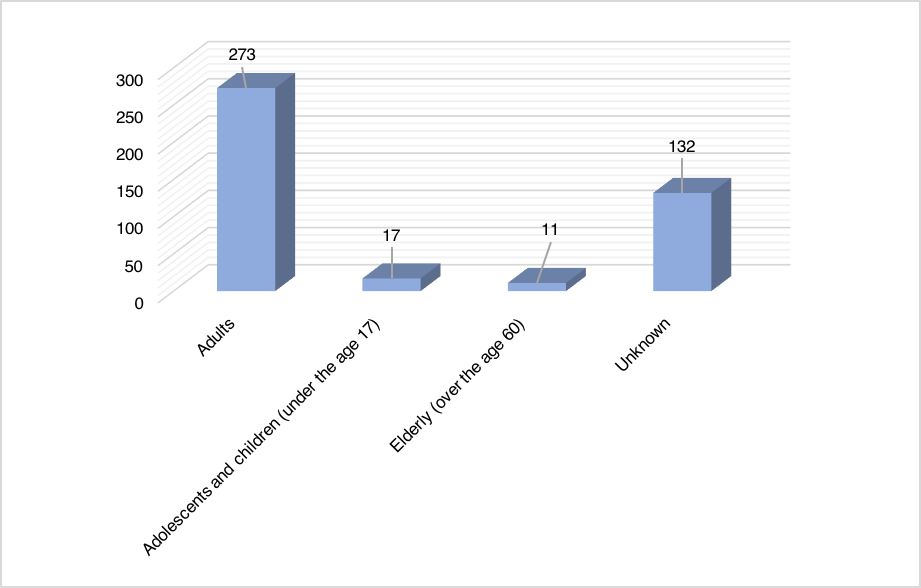
One such example occurred during a sweeping operation in the village of Gekhi-Chu in February 2000, when an entire family suffered at the hands of the military. A pregnant woman and her husband were interrogated and beaten in the yard of their house by soldiers who conducted the operation. This ordeal took place in front of four children. All the family members, half-dressed and bare-footed, were forced at gunpoint to lie in the snow and to remain in that position for approximately four hours. Two days later, the woman passed away. All the four children suffered mental trauma.[9]
In another incident, an elderly woman was detained by security forces on 2 September 2004 at a checkpoint between Urus-Martan and the village of Martan-Chu. The reason given for her detention was that the Russian special services suspected her son to be a militant who had taken hostages in Beslan. However, this information was not confirmed and after several days in detention, the woman was released.[10] According to available data, the woman had both her hands tied behind her back and was withheld water and food for the entire duration of her detention. Her mouth had also been taped and an opaque bag was placed over her head.[11] The woman, who had previously been subjected to unlawful prosecution by members of the security forces, complained in desperation:
Currently, these nervous shocks have greatly undermined my health. Why, according to which law do they do this to me?[12]
In addition to the elderly and children, other victims registered in the Database belonged to vulnerable groups such as: the sick (18 victims), internally displaced persons (14 victims), those with disabilities (13 victims), those in a disabled state (five victims), those with mental disorders (five victims) and pregnant women (three victims). Chart 3 below illustrates these statistics.
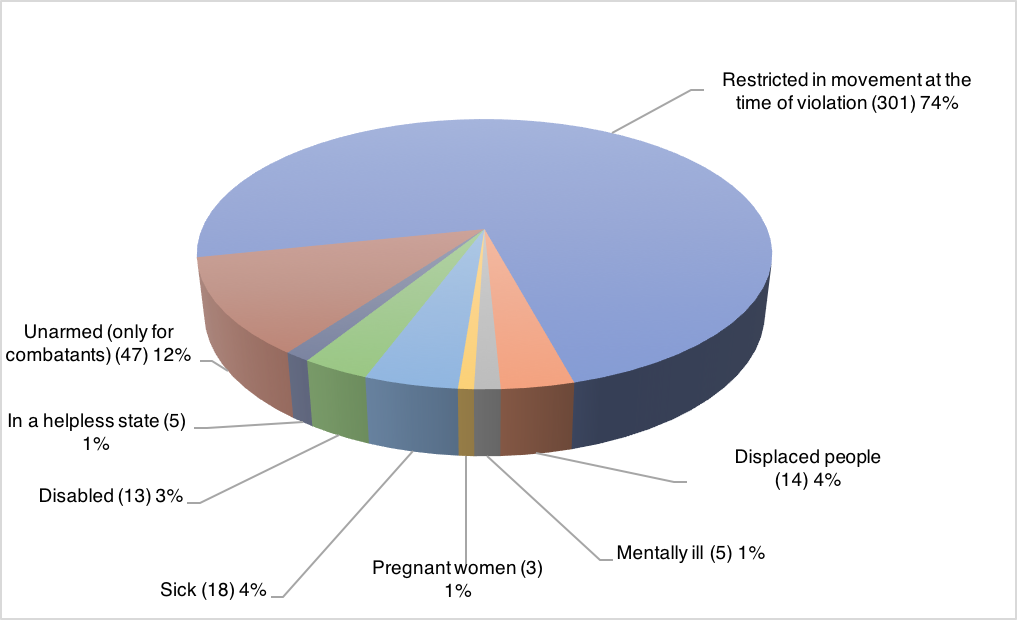
Furthermore as can be seen from the above chart, for the majority of all the victims, their freedom was restricted at the time of violence; they were, for example, either kidnapped, detained or held against their will, with no capacity to defend themselves.
The practice of inhuman and degrading treatment in relation to unverified victims in the Database
The victims described above were verified and registered in the final Catalogue of the Database. However, in addition to these verified victims, there are registered victims in the Database who were also subjected to inhuman and degrading treatment but are still in the verification phase. It should be noted that the same victims may have been registered from different information donors therefore obscuring the exact number of victims, which can only be determined after the profiles have been thoroughly verified. In some cases, due to the lack of sufficient information the profiles registered in the Database appear without names, in cases of both collective and individual victims. As it is impossible to establish more accurate data, such victims will most likely not be included in the final Catalogue of the Database. However, such profiles are nevertheless important for assessing the extent of the overall damage suffered by the population during the conflict.
The table below displays the statistics of the donors of information regarding the victims of the conflict. The materials are processed both in Russian and English and are verified against all data sources.
Chechen Committee for National Salvation | 34 |
European Court of Human Rights | 81 |
Human Rights Watch | 34 |
Interregional Committee against Torture | 1 |
Memorial Human Rights Centre | 538 |
The Russian-Chechen Friendship Society | 103 |
| 791 |
Accordingly, another 791 victims of inhuman and degrading treatment in the Chechen Republic are registered in the Database. Similar to the victims registered in the final Catalogue of the Database, the vast majority of unverified victims – 653 victims i.e. 82% – were civilians who suffered as a result of acts committed by the military or forces acting in their interests. At least 39% of all unverified victims in the Chechen Republic belonged to a vulnerable group of the population. The final tally of victims of inhuman and degrading treatment will only expand the already large-scale data on all victims of the conflict in the North Caucasus. Yet it is still possible to arrive at the conclusion that victims who were subjected to inhuman and degrading treatment during the conflict suffered physical and psychological trauma. Those who survived are still struggling to cope with the aftermath of the conflict.
The statistics provided were updated on 20 March 2019 and again on 6 April 2019.
The data is subject to change in view of the ongoing work by the Natalia Estemirova Documentation Center on the search and identification of victims of the armed conflict.
Audio library
Listen to the story of a victim of rape and robbery carried out by soldiers.
For details on this story, see the “Audio” section.
Listen to the story of a journalist detained and tortured by the military.
For details on this story, see the “Audio” section.
Listen to the story of a refugee from Alkhan-Kala concerning the “sweeping operation” in the village.
For details on this story, see the “Audio” section.
Listen to the witness’s account of the death of her nephew due to a mine explosion and the death of her uncle.
For details on this story, see the “Audio” section.
Listen to the story of a woman who survived the storming of the city of Grozny.
For details on this story, see the “Audio” section.
Media library

NEDC document 23995 
NEDC document 16996 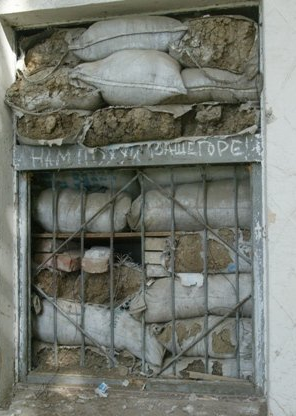
NEDC document 28607 
NEDC document 33965 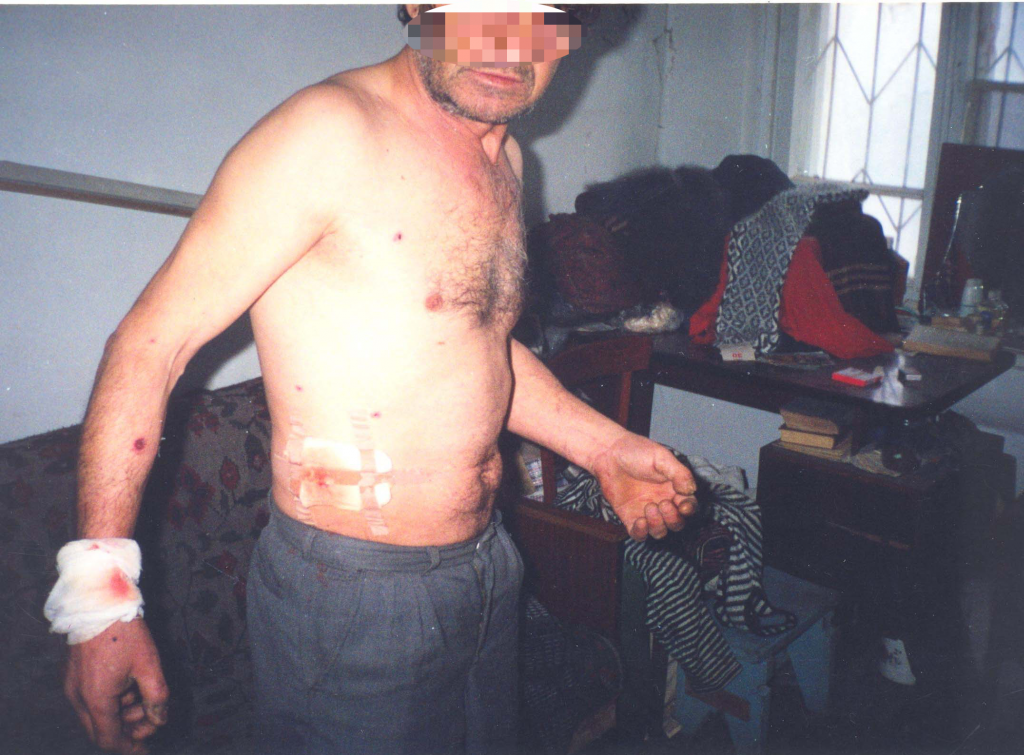
NEDC document 32246 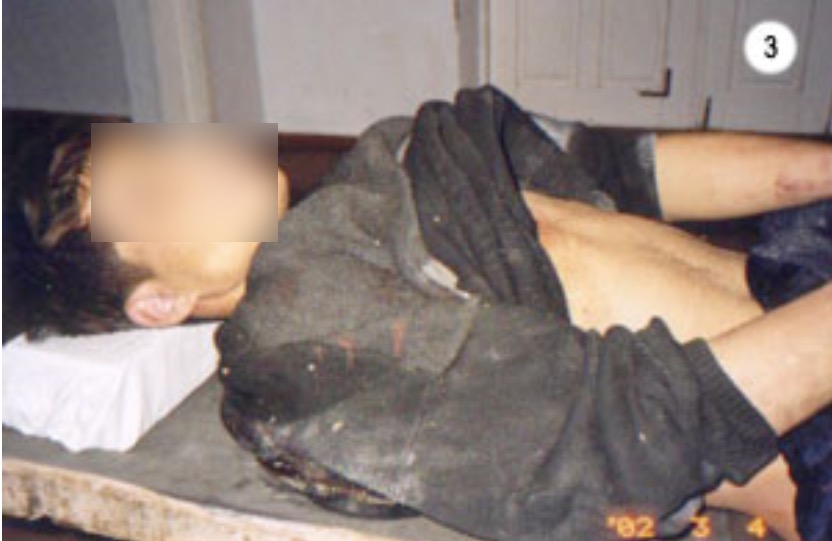
NEDC document 32115
References
[1]See, for example, the International Committee of the Red Cross, “Prohibition and punishment of torture and other ill-treatment”, June 2014, https://www.icrc.org/ru/doc/assets/files/2014/141443_ru_torture_factsheet_ru%5b1%5d.pdf.
[2]See, the website of the International Committee of the Red Cross, https://www.icrc.org/ru/doc/resources/documents/misc/69ubby.htm.
[3]Convention against Torture and Other Cruel, Inhuman or Degrading Treatment or Punishment, December 10, 1984. Also, see the International Journal of the Red Cross, «In the truth of the leitmotiv…»: prohibition of torture and other forms of ill-treatment in international humanitarian law. (K. Droege), vol. 89, No. 867, September 2007, :https://www.icrc.org/ru/doc/resources/documents/article/review/review-867-p515.htm.
[4]The Database mainly contains information about violations committed during the period of the second armed conflict that started in 1999. However, it also contains sporadic facts recorded during the first armed conflict.
[5]Document № 13366.
[6]Incident № 389 «Zachistka in Tsotsi-Yurt, July 2002».
[7]For more information on zachistkas, see the publication «Sweeping operations and their consequences on the civilian population» on the project website.
[8]Incident № 99 «Disappearance of three residents in Tsa-Vedeno, May 3, 2001».
[9]Incident № 308 «Shelling and zachistka in Gekhi-Chu, February 2000».
[10]Incident № 209 «Persecution of the family Sh., 2001 – 2005».
[11]Document № 7650.
[12]Document № 5072.
